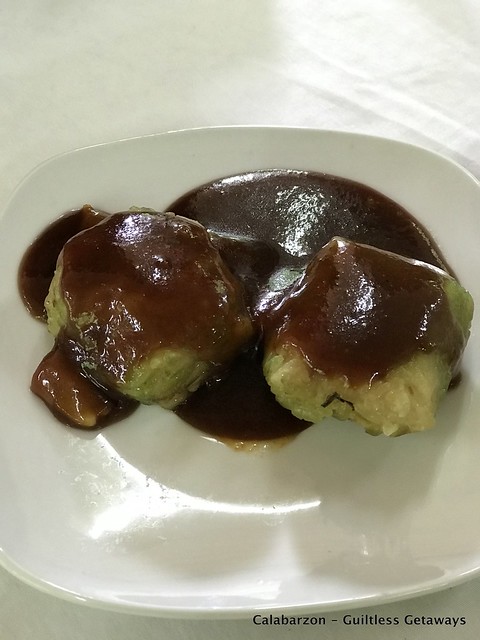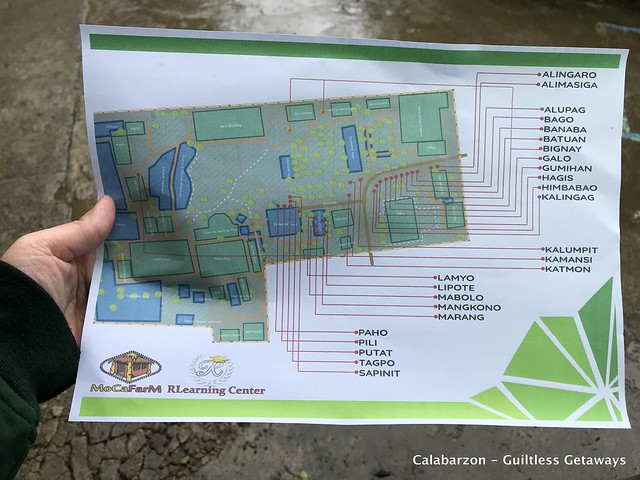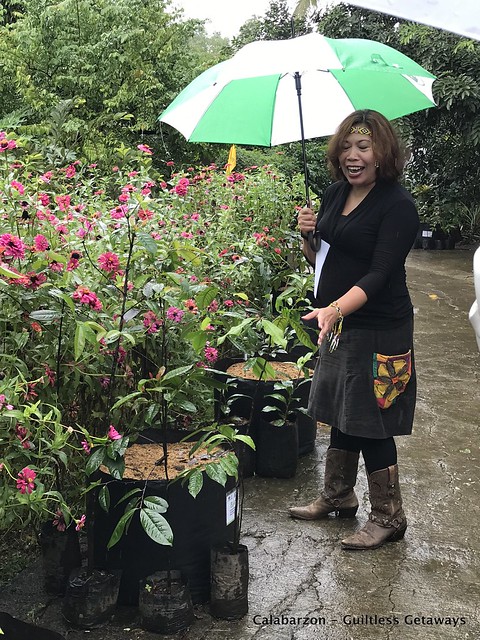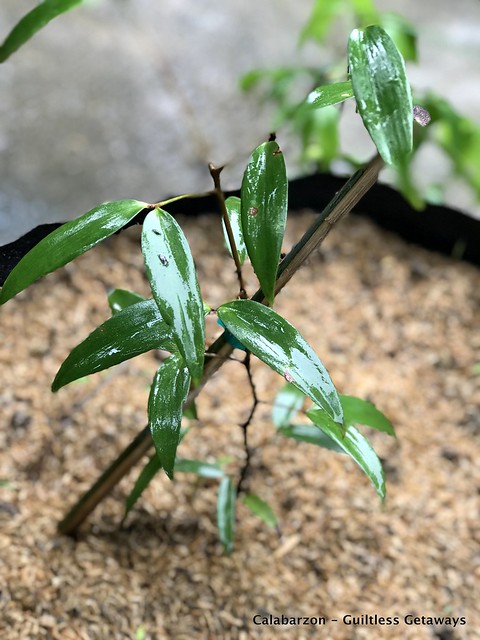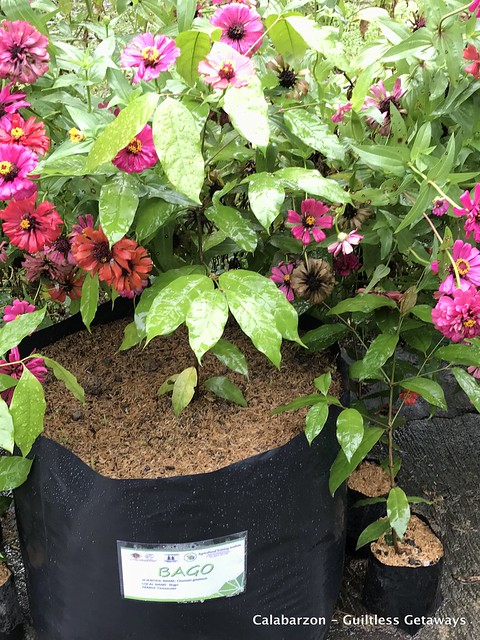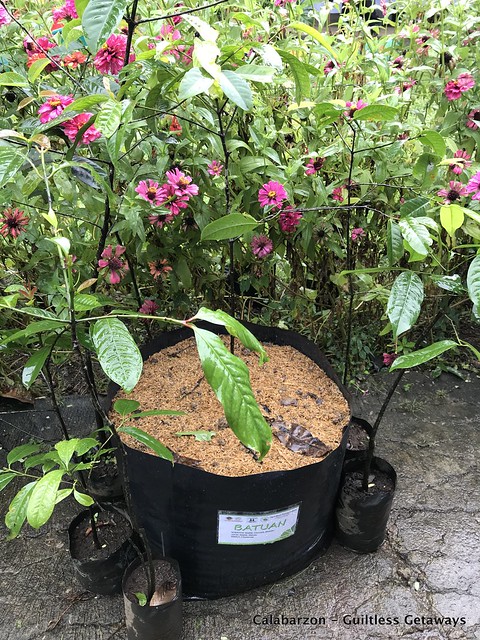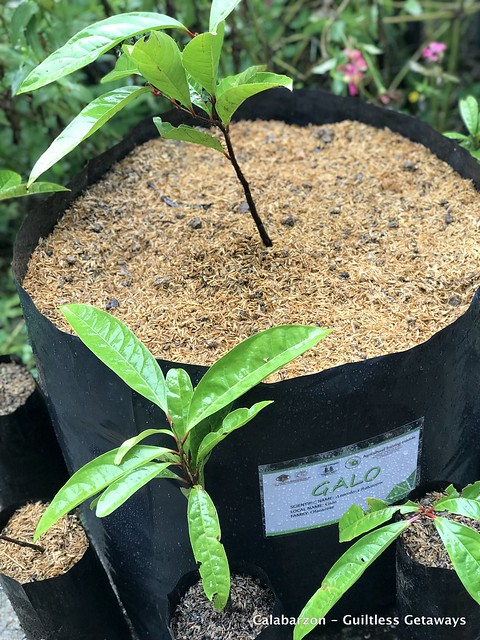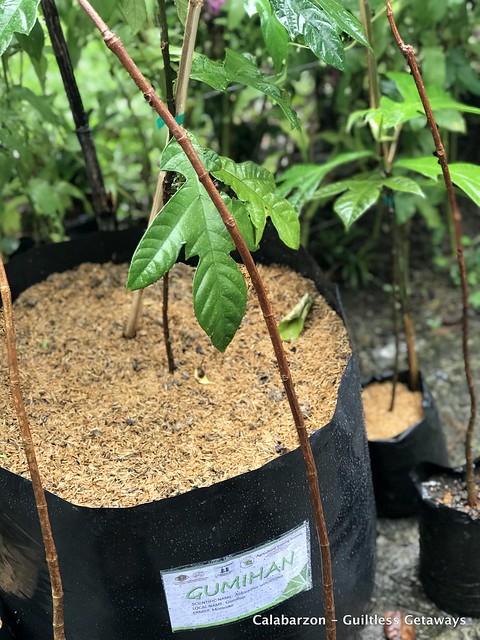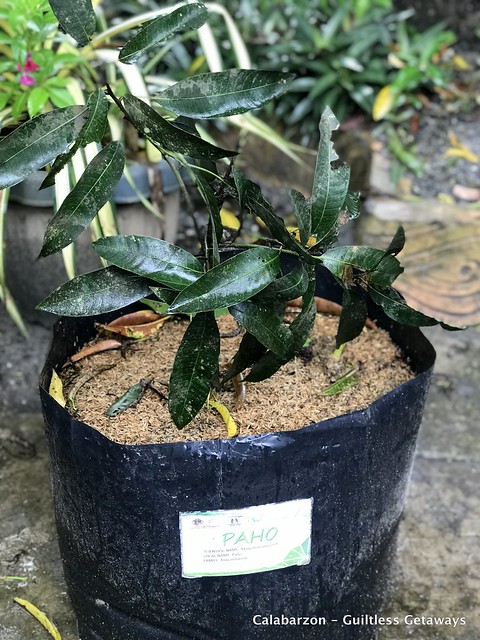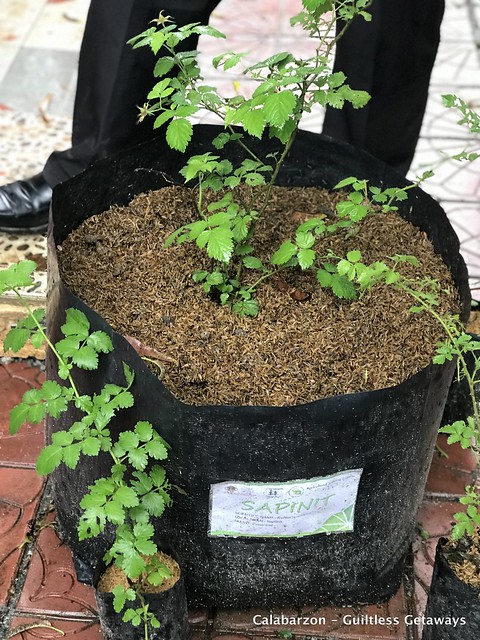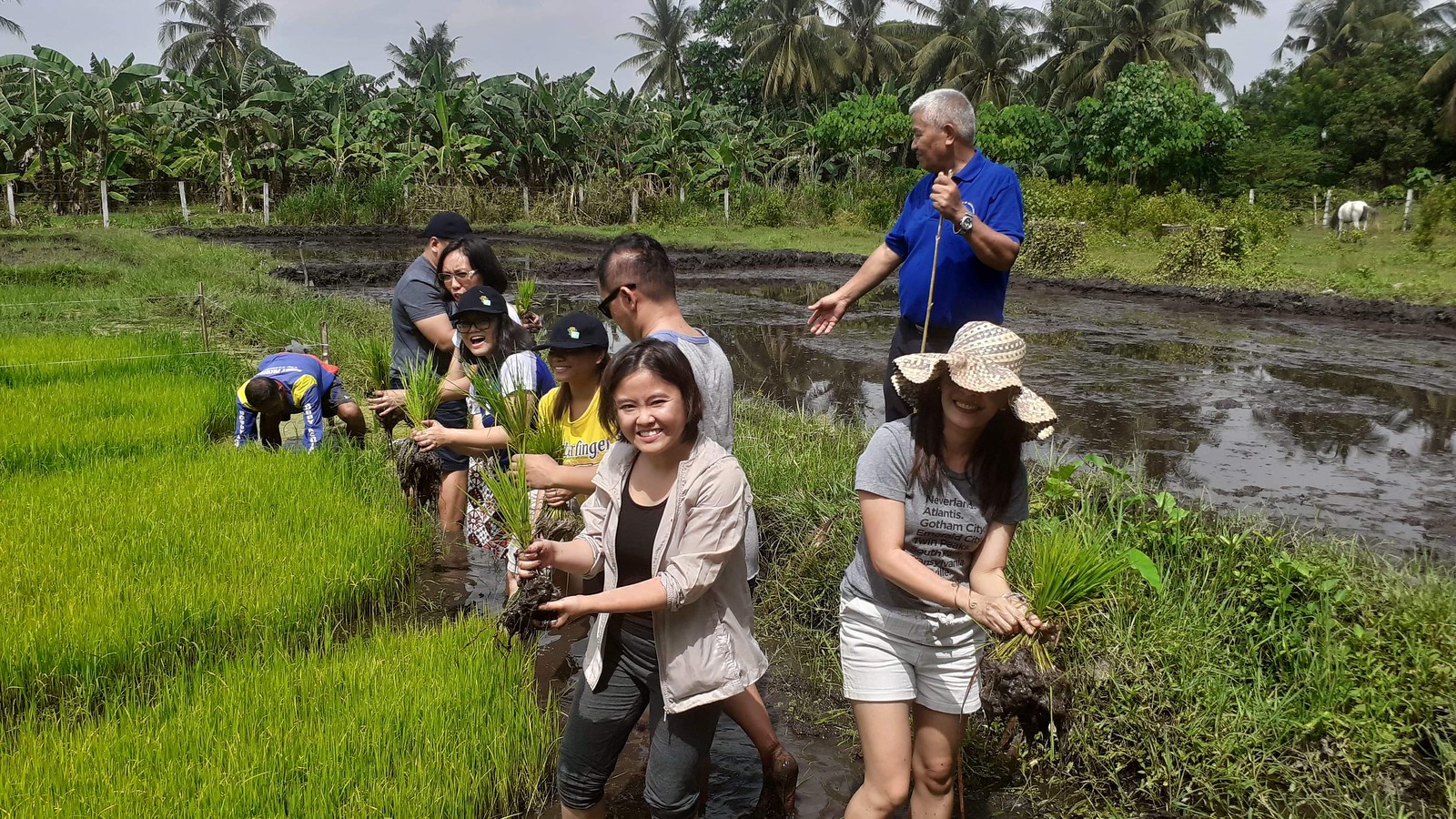I spent the last 2 weekends reading up about Philippine Native Plants thanks to the coffee table book Sariling Atin by Moca Family Farm RL Learning Center in partnership with ATI Calbarzon. In it, Ka Gigi Morris lists down 25 promising indigenous plants in the Philippines. I ended up researching more about 14 of them because it naturally piqued my interest and I’ve never really seen most of them, even in our Organic Agriculture trips with the ATI since 2010.
Hopefully, after I write about them here, I would remember to look for them from now on and get to eat or touch them haha. They actually occur in natural forests and we don’t often see these forest food and fruit species but an introduction to agricultural areas and domestication to propagate may help in food security and in protecting them from extinction.

We spent just a few hours at the Moca Family Farm in Padre Garcia, Batangas.
We went straight to training hall
He told us about the importance of native plants in landscaping, that you don’t have to import expensive plants that still need to acclimate to completely different weather and soil conditions, where there are native plants that are actually more resilient and available already. The first step is identifying them, putting them all in a compilation and circulating the information to as many people for this generation and the next. This way, we also get to preserve them at their own landscapes without increasing our costs.
and met Ms. Gigi’s husband Robert "Bobby" Morris, a horticulture specialist from Nevada - one of the driest, hottest and harshest places in the United States.
He told us about the importance of native plants in landscaping, that you don’t have to import expensive plants that still need to acclimate to completely different weather and soil conditions, where there are native plants that are actually more resilient and available already. The first step is identifying them, putting them all in a compilation and circulating the information to as many people for this generation and the next. This way, we also get to preserve them at their own landscapes without increasing our costs.
They served delicious tamales (suman) with Aapili nut latik. Pili is also featured in the book and gave the latik a nice nutty flavor.
In the farm, they’ve arranged the featured plants with culinary and landscaping benefits from A to Z.
Imagine looking for all these among collectors and in different parts of the country!
It’s actually a rare opportunity to see and touch them altogether, although these are mostly in early stages of growth or just transplanted.
Let me introduce you to the newest plants I learned about from the book and online, and where to find some of them from my trips! Haha.
Let me introduce you to the newest plants I learned about from the book and online, and where to find some of them from my trips! Haha.
Alingaro (Scientific Name: Elaeagnus triflora Roxb.)
Almasiga (Scientific Name: Agathis philippinensis)
The almasiga is a big evergreen forest tree from the time of dinosaurs. It is an ancient tree that is important for indigenous people of Palawan and Sierra Madre mountains, endangered from excessive tapping in harvesting a quality resin known worldwide as Manila copal. It is used for making varnish, lacquer, soap, paint, printing ink, linoleum, shoe polish, floor wax, plastic, water proofing material, and paper sizing according to the Manila Times. Check out this link on how they are doing the almasiga conservation. It is quite interesting.
Bago (Scientific Name: Gnetum gnemon)
I’ve never seen a bago plant before but I found out that it is popular for its leaves. This vegetable tree might be a good backyard plant for food security! Ginataang langka with bago leaves sounds good... Here’s how to cook bago plant leaves 35 ways in Bohol... hehehe.
Batuan (Scientific Name: Garcinia binucao)
I often hear about the batuan plant (abundant in Negros and Panay) and how it can be substituted for sampalok in sinigang, as a souring agent. I tasted half a young leaf and it was pleasantly sour!!! It’s a good vitamin C source and apparently good for diabetes. The Moca Farm sells batuan sinigang mix if you’d like to try it 😉
Bignay (Scientific Name: Antidesma bunius)
I love bignay juice and I'm sipping it as I write this. Haha. I’ve been looking for it everywhere and found it recently being sold by the De La Salle University Salikneta Farm. I first had it in my friend’s house for breakfast and it was sooo good! Then they all make bignay into wine and not juice :( Through decoction, bignay leaves can be used for arthritis and urinary tract infection.
Galo (Scientific Name: Anacolosa frutescens)
I would love to try the two Gs in this list hehe. The galo nut, fruit and seeds are all edible. The ripe fruit is the size of a pingpong ball and closely tastes like creamy avocado with milk and sugar! Mmmm... ;)
Gumihan (Scientific Name: Antocarpus sericarpus)
The gumihan fruit is lika a small marang with no heavy scent! It’s a forest fruit tree and can provide lots of shade with its wide leaves! Now, imagine eating cottony marang under that tree...
Kalingag (Scientifc Name: Cinnamomum mercadoi)
Kalingag is our native cinnamon and has medical properties, especially for stomach troubles and culinary uses.
Kamansi (Scientific Name: Antocarpus camansi)
Katmon (Scientifc Name: Dillenia philippinensis)
Lamyo or Lamio (Scientific Name: Dracontomelon edule)
Lamio wood is used for cabinet and furniture making, musical instruments and wooden wares. For further reading, click on this link.
Mabolo (Scientific Name: Diospyrus discolor)
I’ve had so many close calls to see the now rare living kamagong hardwood tree.. I first heard about the mabolo fruit or velvet apple from Marketman. They say it comes with cheesy odor and boosts the immune system. We passed by this at Terra Verde Ecofarm in Maragondon Cavite.
Paho (Scientific Name: Mangifera altissima)
I thought the paho or pajo is a mango variety but they said it's not. The fruit looks like a tiny mango, harvested green and pickled or brined. You can also mix this with salted egg. It can be propagated by seed so just eat and plant? Hehe. We encountered this during the Guimaras Mango Festival!
Sapinit (Scientific Name: Rubus rosifolius)
Ah, I still remembered when we picked fruits from the prickly sapinit shrub. The Philippine raspberry is part of rose family and comes with sticky thorns! Both J and I have longed to go back to Bangkong Kahoy Valley again in Quezon from January to April but it always slips our minds! Their sapinit raspberry shake is amazing!
They are all quite unique right? I wonder how they chose just 25 from all the interesting plants in the Philippines! It excites me to hear or read about something and see it alive in front of me in the coming trips. I hope I brought home some of that enthusiasm for you in this post and you plant some in your backyard or farm ;) I also hope it sparks a conversation on plants you don’t see anymore or from your childhood memories or a plant that you think is under-appreciated. Let’s support and help preserve our own amazing plants!
For more info on the sites we visited and if you're interested in Philippine agriculture, farm visits and organic farming, check out the ATI, E-Extension and Department of Agriculture websites.
For their Facebook, Twitter, YouTube and Instagram, you can check out @atiinteractive.
ATI also has a list of all accredited farms that are Learning Sites (LS), Extension Service Providers (ESP) and Schools for Practical Agriculture (SPA). Click here. These are the hotlines of ATI Main if you want to be in touch and ask for the farm contacts - 0920-9462474 or 929-8541 (government office hours). It is better to call their regional offices (info available at the ATI website) also as they are the ones coordinating with the farmers.
Details:
MoCa Family Farm in Padre Garcia, Batangas
Accredited DA-ATI Region 4A Extension Service Provider, TESDA Accredited
Website
Accredited DA-ATI Region 4A Extension Service Provider, TESDA Accredited
Padre Garcia, Batangas
staff@mocafarm.com
(043) 5157194
FacebookWebsite
ATI Calabarzon Region Facebook
8575 Camerino St. Brgy Lapidario, Trece Martires City, Cavite
atirtc4a@gmail.com
(046) 4190210
Website
8575 Camerino St. Brgy Lapidario, Trece Martires City, Cavite
atirtc4a@gmail.com
(046) 4190210
Website
Check Out My Other Posts:
Visiting South Cotabato's Sunflower Field at Blooming Petals Agri-Tourism Park
How to Make Vermicast, Simple Vermicomposting Tips, Itik Pinas Housing and Planting Rice at Felicidad Organic Farm in Mindanao
Around the World with Felicidad Orchard & Garden Organics Farm - Agri Tourism and Innovations in GenSan!
Sanctuario Nature Organic Farm in Indang Mendez Cavite - Practical Organic Farming Tips, Fermented Plant Juice, Fermented Fruit Juice, Calcium Source and OHN Recipes!
Farms to Visit, Where to Eat and Where to Stay Overnight in Cavite, Laguna, Batangas and Tagaytay - Accommodations at the ATI Calabarzon Dormitory, Gorgeous Farms and The Wild Juan!
Hog Raising Sneak Peek and Tips at Teofely Nature Farms, October Blackfeast and Native Pig Lechon at the ATI Agriculturally Awesome Event in Teofely Gardens Silang Cavite!
Memorable Farm Stay Experience with Mr. Eric Atanacio and 4x4 Tour at Terra Verde Ecofarm & Resort in Maragondon Cavite!
Indigeneous Native Plants in the Philippines Introduction and Sariling Atin Coffee Table Book Launch at the MoCa Family Farm RLearning Center in Padre Garcia, Batangas!
How to Make Vermicast, Simple Vermicomposting Tips, Itik Pinas Housing and Planting Rice at Felicidad Organic Farm in Mindanao
Around the World with Felicidad Orchard & Garden Organics Farm - Agri Tourism and Innovations in GenSan!
Sanctuario Nature Organic Farm in Indang Mendez Cavite - Practical Organic Farming Tips, Fermented Plant Juice, Fermented Fruit Juice, Calcium Source and OHN Recipes!
Farms to Visit, Where to Eat and Where to Stay Overnight in Cavite, Laguna, Batangas and Tagaytay - Accommodations at the ATI Calabarzon Dormitory, Gorgeous Farms and The Wild Juan!
Hog Raising Sneak Peek and Tips at Teofely Nature Farms, October Blackfeast and Native Pig Lechon at the ATI Agriculturally Awesome Event in Teofely Gardens Silang Cavite!
Memorable Farm Stay Experience with Mr. Eric Atanacio and 4x4 Tour at Terra Verde Ecofarm & Resort in Maragondon Cavite!
Indigeneous Native Plants in the Philippines Introduction and Sariling Atin Coffee Table Book Launch at the MoCa Family Farm RLearning Center in Padre Garcia, Batangas!




